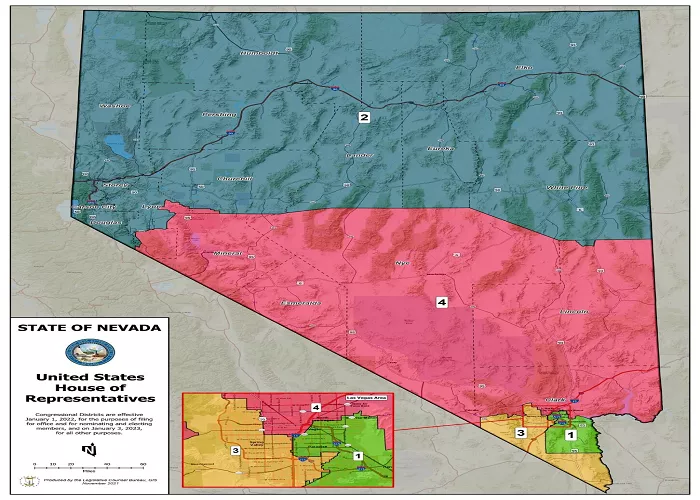Nevada, known for its vast deserts and vibrant cities, holds a unique position in the United States’ political sphere. Its electoral significance stems from its status as a swing state, where voting patterns can pivot between Democratic and Republican preferences. This article delves into Nevada’s political geography, analyzing its counties, voting behaviors, and the factors influencing its electoral dynamics.
Overview of Nevada’s Political Structure
Nevada is divided into 17 counties and one independent city, Carson City. Each county has its own political leanings, which collectively shape the state’s electoral outcomes. The counties range from urban centers like Clark County, encompassing Las Vegas, to rural areas with distinct conservative values.
Key Counties and Their Political Leanings
1. Clark County
Home to approximately 70% of Nevada’s population, Clark County is the state’s most populous region. It includes Las Vegas and its surrounding suburbs. Historically, this county leans Democratic, playing a crucial role in statewide elections. However, recent trends indicate a tightening political landscape, with Republicans making inroads.
2. Washoe County
Located in the northwestern part of the state, Washoe County includes the city of Reno. This county is considered a swing region, with no consistent partisan dominance. Its electoral outcomes often mirror national trends, making it a focal point for campaign strategies.
3. Rural Counties
The remaining counties, such as Elko, Churchill, and Nye, are predominantly rural. These areas traditionally lean Republican, with conservative values influencing their voting behaviors. However, demographic shifts and economic changes are gradually altering their political landscapes.
Voting Patterns and Electoral Trends
Nevada’s voting history showcases its status as a battleground state. In the 2024 presidential election, Republican candidate Donald Trump flipped Nevada, securing 50.6% of the vote, while Democratic candidate Kamala Harris received 47.5%. This shift marked a significant change from previous elections, where Democrats had a stronger hold.
Analyzing past elections reveals a pattern of oscillation between parties. For instance, in 2020, Democratic candidate Joe Biden narrowly won Nevada with 50.1% of the vote against Donald Trump’s 47.7%.
Factors Influencing Nevada’s Political Landscape
Several elements contribute to the evolving political dynamics in Nevada:
1. Demographic Changes
An influx of residents from other states, particularly California, has introduced diverse perspectives and voting behaviors. These newcomers often bring different political affiliations, influencing local and state elections.
2. Economic Issues
Economic concerns, including unemployment rates, housing affordability, and taxation, heavily influence voter decisions. Candidates addressing these issues effectively can sway public opinion.
3. Urban vs. Rural Divide
The contrast between urban centers like Las Vegas and rural counties leads to differing priorities and political views. Urban areas tend to support Democratic candidates, while rural regions favor Republicans. Bridging this divide is crucial for statewide electoral success.
Impact of Recent Elections on Nevada’s Political Map
The outcomes of recent elections have significantly impacted Nevada’s political landscape:
- 2024 Presidential Election: Donald Trump’s victory in Nevada challenged the Democratic Party’s longstanding influence, prompting a reevaluation of campaign strategies in the state.
- Shifting Voter Demographics: The migration of individuals seeking affordability has altered the state’s demographic makeup, introducing new political perspectives and influencing election results.
Visualizing Nevada’s Political Landscape
To better understand Nevada’s political divisions, examining detailed maps is beneficial. These maps illustrate voting patterns, county-by-county results, and demographic influences, providing a clear picture of the state’s electoral geography.
Conclusion
Nevada’s political map is a mosaic of diverse counties, each contributing uniquely to the state’s electoral outcomes. Understanding these divisions, along with the factors influencing voter behavior, is essential for comprehending Nevada’s role in national politics. As demographic and economic landscapes continue to evolve, Nevada’s political dynamics will undoubtedly remain a subject of keen interest and analysis.

